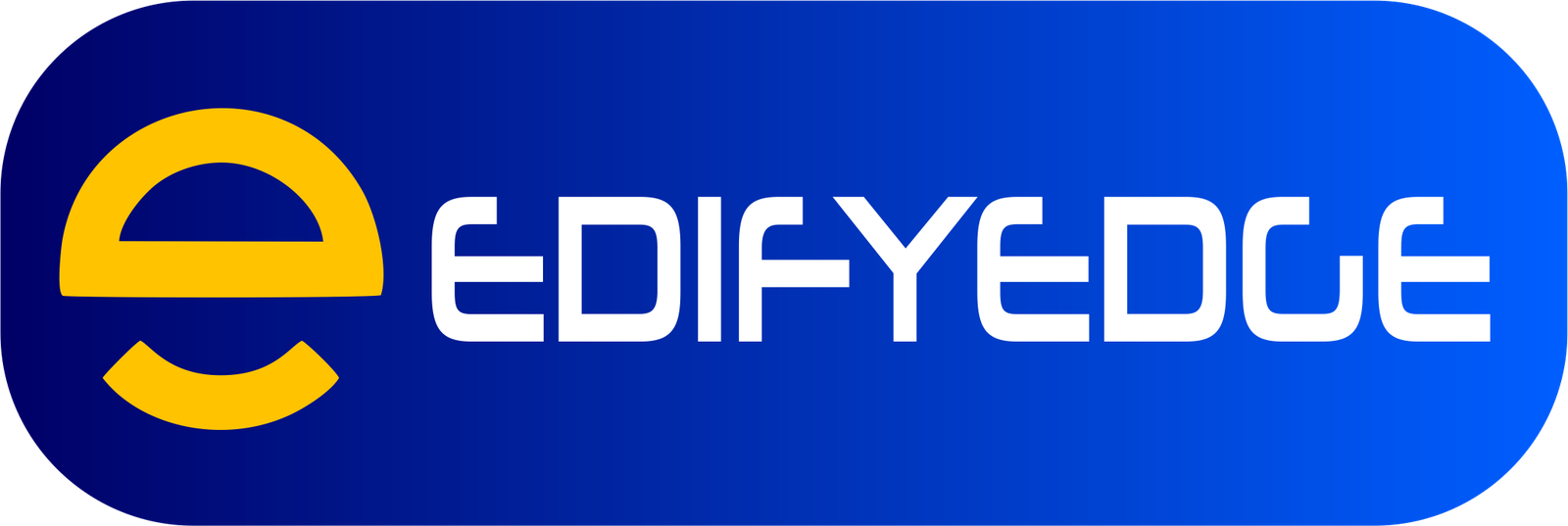What is an Undergraduate Education Loan?
An undergraduate education loan is a type of financial aid designed to help students pay for their college or university education. These loans are specifically intended for individuals pursuing their first degree, such as a bachelor’s degree or an associate’s degree.
The primary purpose of an undergraduate education loan is to bridge the gap between the cost of attendance and the amount covered by other sources of financial aid, such as grants, scholarships, and personal or family contributions. These loans can be used to cover tuition fees, room and board, textbooks, and other educational expenses.
To be eligible for an undergraduate education loan, students typically need to meet certain criteria. These may include:
- Enrollment: The student must be enrolled at least half-time in an eligible degree program at an accredited institution.
- Academic Progress: Students may need to maintain satisfactory academic progress, as defined by their institution.
- Financial Need: Some loans are need-based, meaning the student must demonstrate financial need based on their family’s income and assets.
- Citizenship or Residency: Most loans require the student to be a U.S. citizen, permanent resident, or eligible non-citizen.
Undergraduate education loans can come from various sources, including the federal government, private lenders, and some state-based organizations. Each loan program may have its own specific eligibility criteria, interest rates, and repayment terms.
Types of Undergraduate Education Loans
Undergraduate students have access to various types of education loans to finance their college expenses. These loans can broadly be categorized into federal student loans, private student loans, and state-sponsored student loans.
Federal Student Loans
The U.S. Department of Education offers two primary types of federal student loans for undergraduates:
-
Direct Subsidized Loans: These loans are available to undergraduate students who demonstrate financial need. The government covers the interest accrued on these loans while the student is enrolled in school at least half-time, during the grace period after graduation, and during periods of authorized deferment.
-
Direct Unsubsidized Loans: These loans are available to undergraduate students regardless of financial need. Interest accrues on these loans from the time of disbursement, and students are responsible for paying the interest during all periods.
Federal student loans typically offer lower interest rates, income-driven repayment plans, and various borrower protections compared to private student loans.
Private Student Loans
Private student loans are offered by banks, credit unions, and other private lenders. These loans are credit-based and may require a cosigner if the student has limited or no credit history. Private student loans generally have higher interest rates and fewer repayment options compared to federal student loans.
State-Sponsored Student Loans
Some states offer their own student loan programs to help residents finance their education. These loans may have varying terms, interest rates, and eligibility requirements depending on the state. State-sponsored student loans can be an additional source of funding for undergraduate students, particularly for those who have exhausted their federal student loan options.
It’s important for students to carefully evaluate their options, understand the terms and conditions of each loan type, and borrow only what is necessary to cover their educational expenses.
Loan Eligibility and Requirements
To be eligible for federal student loans, you must complete the Free Application for Federal Student Aid (FAFSA) form. The FAFSA determines your Expected Family Contribution (EFC), which is used to calculate your financial need and eligibility for federal aid. Generally, you must be enrolled at least half-time in an eligible degree or certificate program at a participating school to qualify for federal loans.
The maximum federal loan amount you can borrow is determined by your cost of attendance (COA), which includes tuition, fees, room and board, books, supplies, and other educational expenses. Your total financial aid, including loans, grants, and scholarships, cannot exceed your COA.
Private student loans, offered by banks, credit unions, and other lenders, have their own eligibility criteria. These may include factors like credit score, income, debt-to-income ratio, and the availability of a co-signer. Private lenders may also consider your major, academic performance, and the type of school you attend.
Both federal and private loans require you to make satisfactory academic progress and maintain a minimum GPA set by your school. Additionally, you cannot be in default on any existing student loans or owe a refund on federal aid.
Loan Application Process
The process of applying for an undergraduate education loan involves several steps, depending on whether you’re seeking federal or private student loans.
Federal Student Loans
-
Complete the Free Application for Federal Student Aid (FAFSA): The FAFSA is the first and most crucial step in applying for federal student loans, grants, and work-study programs. You’ll need to provide personal and financial information about yourself and your family.
-
Review your Student Aid Report (SAR): After submitting the FAFSA, you’ll receive a SAR, which summarizes the information you provided and includes your Expected Family Contribution (EFC). Review the SAR carefully and make any necessary corrections.
-
Await your Financial Aid Award Letter: Your college or university will use the information from your FAFSA to determine your eligibility for federal student loans and other financial aid. They’ll send you a financial aid award letter detailing the types and amounts of aid you’re eligible for.
-
Accept or Decline the Loan Offer: Review the terms and conditions of the loan offer carefully, and decide whether to accept the full amount, a partial amount, or decline the loan altogether.
-
Complete Entrance Counseling and Sign a Master Promissory Note (MPN): If you accept a federal student loan, you’ll need to complete entrance counseling to learn about your rights and responsibilities as a borrower. You’ll also need to sign an MPN, a legal agreement to repay the loan.
Private Student Loans
-
Determine Your Financing Needs: Calculate the remaining costs after exhausting federal student aid options and personal or family contributions.
-
Shop Around and Compare Lenders: Research and compare interest rates, repayment terms, and borrower benefits from various private lenders.
-
Apply Directly with the Lender: Complete the lender’s application process, providing personal, financial, and academic information. You may need to submit additional documents, such as tax returns, pay stubs, or transcripts.
-
Await Approval and Accept the Loan Terms: If approved, review the loan terms carefully, including interest rates, fees, and repayment options.
-
Complete Any Required Documentation: Sign the promissory note and any other necessary paperwork provided by the lender.
It’s essential to be aware of application deadlines and to submit all required documents promptly to ensure timely processing of your loan application.
Interest Rates and Repayment Terms
Interest rates on undergraduate education loans can be either fixed or variable. Fixed interest rates remain constant throughout the loan’s lifetime, providing predictability and stability in repayment amounts. Variable interest rates, on the other hand, fluctuate based on market conditions, potentially increasing or decreasing your monthly payments.
Repayment plans for undergraduate loans typically offer several options to accommodate different financial situations. Standard repayment plans involve fixed monthly payments over a set period, usually 10 years. Graduated repayment plans start with lower payments that gradually increase over time, allowing borrowers to ease into repayment as their income grows.
Many loans offer a grace period, typically six months after graduation or leaving school, before repayment begins. This grace period provides a buffer for students to secure employment and manage their finances before loan payments are due.
Loan forgiveness programs are available for certain professions or circumstances, such as public service, teaching in high-need areas, or qualifying for income-driven repayment plans. These programs can partially or fully forgive remaining loan balances after a specified period of eligible employment or consistent payments.
Responsible Borrowing
Responsible borrowing is a crucial aspect of taking out an undergraduate education loan. It involves carefully considering your financial needs and borrowing only what is necessary to cover your educational expenses. Overborrowing can lead to a significant debt burden that can be challenging to manage after graduation.
Before taking out a loan, it’s essential to understand the terms and conditions, including the interest rates, repayment periods, and any fees associated with the loan. Thoroughly review the loan agreement and ask questions if anything is unclear. This knowledge will help you make informed decisions and plan for repayment effectively.
Budgeting and managing expenses are key components of responsible borrowing. Create a realistic budget that accounts for tuition, fees, room and board, books, and other educational costs. Identify areas where you can cut back on unnecessary expenses and explore ways to supplement your income through part-time employment or scholarships.
It’s also important to consider the long-term implications of borrowing. Evaluate your projected income after graduation and determine a manageable monthly payment that fits within your budget. Avoid taking on excessive debt that could strain your financial stability in the future.
By borrowing responsibly and managing your expenses effectively, you can minimize the burden of student loan debt and set yourself up for a more secure financial future after completing your undergraduate education.
Alternatives to Student Loans
Pursuing higher education can be a significant financial investment, but there are alternatives to traditional student loans that can help reduce the burden of debt.
Work-study programs are another viable alternative. These programs allow students to work part-time on campus or with approved off-campus employers, earning money to help cover educational expenses. Not only do work-study programs provide financial assistance, but they also offer valuable work experience and the opportunity to build professional skills.
For those seeking a more unconventional approach, income-share agreements (ISAs) have gained popularity in recent years. With an ISA, students receive funding from an investor in exchange for a percentage of their future income over a set period after graduation. This arrangement can be beneficial for those who are uncertain about their post-graduation earnings or prefer a more flexible repayment structure.
Finally, personal savings can be a valuable resource for funding education. While it may not cover the entire cost, setting aside money from part-time jobs, summer employment, or other sources can help reduce the need for loans and minimize debt upon graduation.
Loan Repayment Strategies
After graduating, it’s crucial to have a solid plan for repaying your undergraduate student loans. Fortunately, there are several strategies available to help make the repayment process more manageable. One option is to explore income-driven repayment plans, which base your monthly payment amount on your current income and family size. These plans can provide much-needed relief if you’re struggling financially after graduation.
Another strategy is loan consolidation, which involves combining multiple federal loans into a single loan with a fixed interest rate based on the average of your previous rates. Consolidation can simplify the repayment process by giving you just one monthly payment to manage. It can also provide access to additional repayment plans and potentially lower your monthly payments.
Regardless of the strategy you choose, it’s essential to stay on top of your loan repayment obligations. Missing payments can have severe consequences, including late fees, damage to your credit score, and even loan default. To avoid these issues, consider setting up automatic payments or exploring deferment or forbearance options if you’re experiencing financial hardship.
Avoiding Default and Delinquency
Defaulting on student loans can have severe consequences, including damaged credit scores, wage garnishment, and even legal action. It’s crucial to take proactive steps to avoid delinquency and default. If you’re struggling to make payments, explore options like deferment or forbearance, which temporarily suspend or reduce your monthly payments.
Interest may or may not accrue during deferment, depending on the loan type.
Forbearance, on the other hand, is a temporary suspension or reduction of payments due to financial difficulties or other acceptable reasons. Interest continues to accrue during forbearance, increasing the total amount you’ll need to repay.
If you’ve already defaulted on your loans, loan rehabilitation may be an option. This process involves making nine consecutive, on-time payments over a period of 10 months. Successful rehabilitation will remove the default status from your credit report and make you eligible for new loans and repayment plans.
It’s essential to communicate with your loan servicer promptly if you’re experiencing financial difficulties. They can guide you through the available options and help you develop a manageable repayment plan. Ignoring the problem or avoiding communication will only exacerbate the situation and increase the likelihood of default and its severe consequences.
Financial Literacy and Student Loan Counseling
Pursuing higher education is a significant investment, and it’s crucial for students to understand the financial implications of taking out loans. Financial literacy education and student loan counseling play a vital role in empowering students to make informed decisions and manage their debt responsibly.
Financial literacy education equips students with the knowledge and skills necessary to navigate the complex world of personal finance. It covers topics such as budgeting, credit management, saving, and investing. By gaining a solid understanding of these concepts, students can develop healthy financial habits and make sound decisions regarding their education loans.
Student loan counseling is a valuable resource that provides guidance and support throughout the loan process. Many institutions offer entrance and exit counseling sessions to help students understand the terms and conditions of their loans, as well as their rights and responsibilities as borrowers. These counseling sessions also cover repayment options, deferment and forbearance options, and strategies for managing loan debt after graduation.
Budgeting tools are essential for students to effectively manage their finances while in school and after graduation. Online budgeting apps and spreadsheets can help students track their income and expenses, set financial goals, and allocate funds appropriately. By developing budgeting skills, students can better plan for loan repayment and avoid falling into excessive debt.
Financial literacy education and student loan counseling empower students to take control of their financial futures. By equipping themselves with the necessary knowledge and resources, students can make informed decisions, manage their loans responsibly, and establish a solid foundation for long-term financial well-being.



